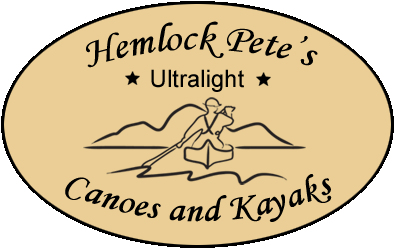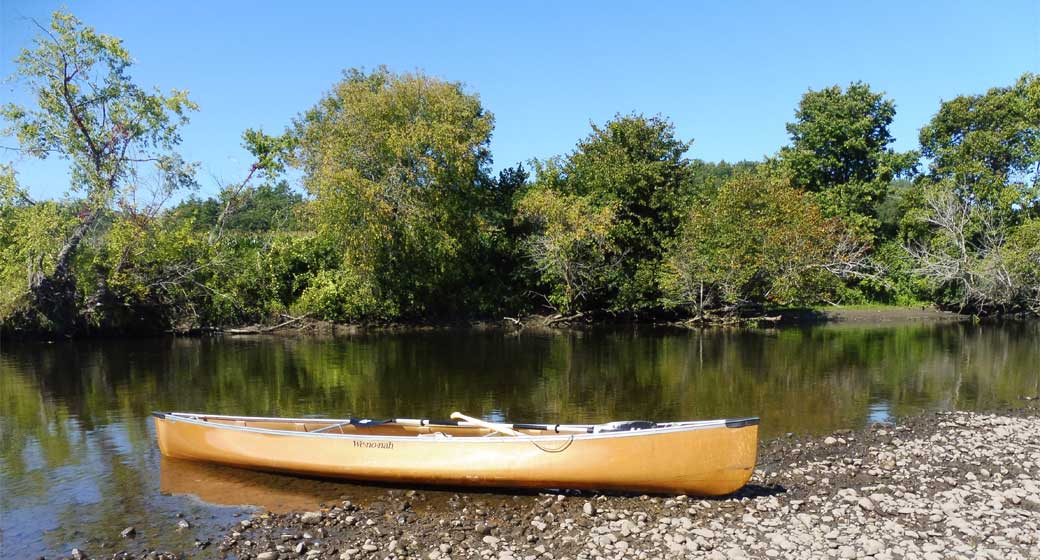



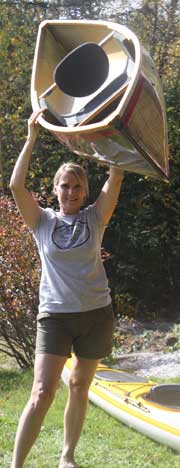
![]() Ultralight boats!
Ultralight boats!
Loons
It is hard to describe the feeling you experience sitting on the shore of a remote lake all alone as the sun begins to disappear into the mirror smooth water. As darkness moves in and the temperature begins to drop I draw in as much of the crisp clean air as my lungs will hold. I have just finished dinner and am sitting in front of a fire sipping on a cup of hot chocolate thinking to myself, "it doesn't get any better than this". The scene that surrounds me is simply superb. As I scan the water in front of me, out of nowhere a loon appears.
Known as the great northern diver, nothing epitomizes the northern wilderness more than this magnificent bird. Nothing except maybe its eerie call that seems to rise from below the waters surface and echo between the mountains surrounding the lake. The long howling wail reaches out initiating a response from a neighbor on the pond beyond the ridge at the end of the lake. The two exchange a chorus of calls well into the evening and then as quickly as it began, it ends.
The Common Loon is a large bird that inhabits lakes and ponds in the northeast. I say large because their size is deceiving. Most often you will see them from a distance floating on the water with the bulk of their body concealed below the surface. Only rarely will you see them out of the water either flying or displaying which means you have ventured to close. They are a very shy bird and need their space. Please respect this and give them a wide berth, especially if they have young. Another sure way to know when you are in their territory is when you here the warning call. The tremolo, that unmistakable, insane laugh like sound.
They are excellent divers and live on a diet of fish. It always amazes me to see how silently and quickly they slip below the water's surface. Equally as impressive is to see how far they travel before resurfacing. Unlike other birds, a loon's bones are solid and very dense allowing them to sink like a rock when needed. The body is very streamline and made even more so when the wings squeeze everything in tight just prior to a dive. Combine this with large powerful feet set way back on the body for maximum propulsion and you have a pretty efficient machine. In fact the feet are so far back , they have a hard time walking upright on land. Quite often they must shove their bodies along which is why you will almost never see them out of the water.
A loon's coloring is as unique as its call. It has a long black head and neck with a white band around the base. A white chest and then a checker board pattern of white and black on its back. In keeping with its eerie reputation it sports a pair of ruby red eyes. I have heard many tales as to how a loon got these strange markings. Here are two that come to mind. In one, a young blind Indian boy sits beside a lake crying because he will never see all of the wonderful things his people describe to him. A loon draws near and upon hearing his story, takes pity on the child. He invites the young lad to ride on his back which he does. The loon dives to the bottom of the lake several times. Upon surfacing each time the boys sight improves until it has completely returned. To thank the loon for his kind deed the boy made a necklace of shells which the loon still wears today, hence the white ring at the base of the neck. Another tale involves a loon and an otter in a dispute over something that escapes my memory. Anyway the loon ends up on the better end of the argument and for revenge the otter throws a bucket of ashes on the loons back. Prior to this, the loon was completely black in color. Since the ashes never washed off he now sports a white, gray, and black checkerboard pattern on his back.
As I retire to my tent I can hear another loon calling way off in the distance. It is not long before I hear another, then another, and then another. They may be echo's or individual birds, who cares, it truly doesn't get any better than this. Happy paddling!!!
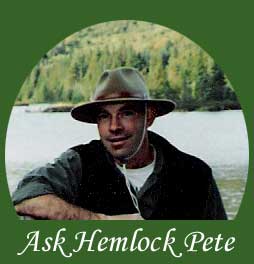
Have a question? I'm happy to answer it - just email me at hpcanoes@gmail.com
![]()
hpcanoes@gmail.com
603.667.5112
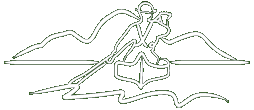
We specialize in ultralight solutions and offer expertise in canoes and Wee Lassie boats, as well as all the related equipment. Our favorites are Wenonah canoes and Wee Lassie boats. Although we will work with any material we like to get folks set up with lightweight canoes so you can dedicate your time to the joy of being out on the lakes and rivers instead of struggling to move your boat between car and water.
Scott Edwards, "Hemlock Pete" himself, offers you decades of paddling expertise. He is friendly, down-to-earth, and provides superior customer service. You won't find a better, or more pleasant, deal elsewhere.
